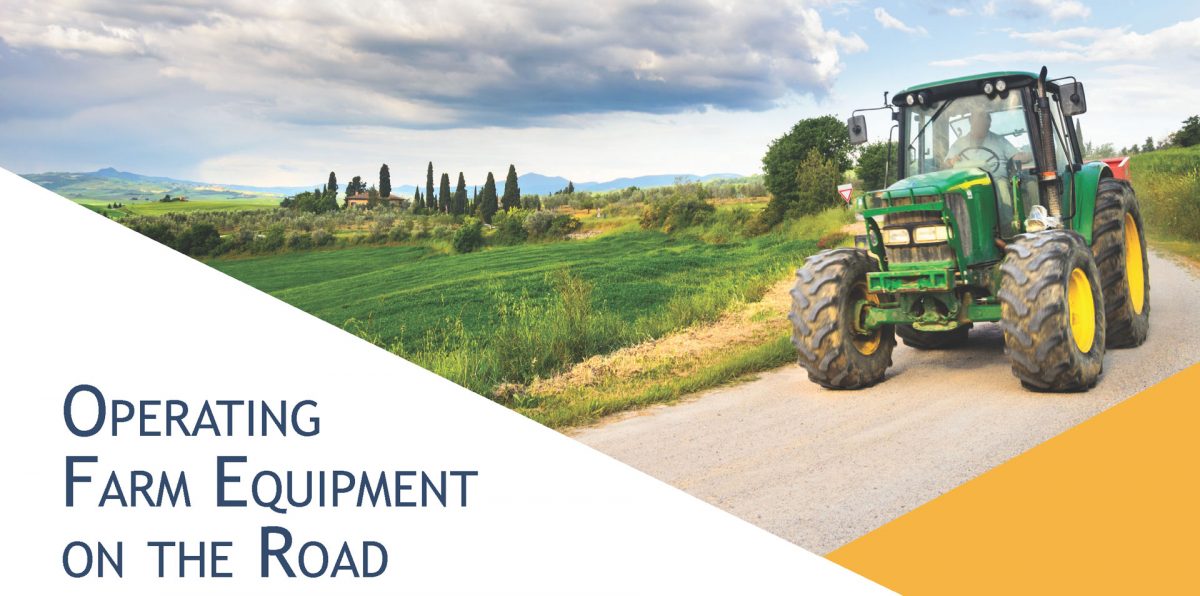

Before Leaving the Farm
• Clean the machine’s windshield as well as check the windshield wipers and defroster.
• Verify that all machinery and equipment being towed has clearly visible, slow moving vehicle placards installed.
• Clean and check that all lights, reflectors, and side mirrors are working. Replace non-working bulbs and lamps.
• Check that brakes are working properly.
• Check tires for proper inflation and add air, as necessary.
• If towing a load, make sure it’s correctly hitched and the load is secured. Lower any grain augers.
• Use flashing amber lights before departing.
Leaving the Farm
• Farm driveways are not always identified as such, so motorists don’t expect to see a massive tractor or other large equipment slowly emerging.
• Look both ways, then left again, and watch for passing cars headed your way.
• Don’t guess whether you can make it out before an oncoming vehicle. It’s best to wait.
On the Road
• Travel at a safe speed and don’t make any sudden moves.
• Always signal well ahead of a turn and follow other vehicles at a safe distance.
• Give yourself ample time to slow down. Large equipment appears to be moving slower than it may be.
• Use a pilot car when it’s possible.
• Drive either completely on the shoulder or completely in the lane with any excess on the shoulder. If a partial lane is open, drivers will try to dart and potentially cause head-on collisions.
• DO NOT TALK ON THE PHONE OR TEXT WHILE IN MOTION. If it’s necessary to use your phone, find a place well off the road and shoulder to avoid being struck from behind. You need all of your attention on the roads.
• Try to travel at slower times of the day and avoid dusk and dawn, as other drivers may not see your vehicle during these times and may cause accidents.

